People interested in Fukushima have almost certainly heard of the ‘sensational’ post by Keow Wee Loong, a 28-year-old man from Malaysia who claims that he travelled illegally around Fukushima’s ‘no-go’ zones. It turns out, however, that his story is almost completely fabricated. Unfortunately, the story by this man, who hid his face behind a gas mask, was so convincing that people swallowed it whole and it rapidly spread around the world. His story and photos were published in on reputable services like TIME, CNN and hundreds of others. And, as the author himself admits, he gave 34 interviews in a single day. The entire story of his trip through the no-go zones, sneaking through the forest and avoiding the police is a fiction by a man seeking fame and attention, as opposed to the real popularity that he undoubtedly generated.
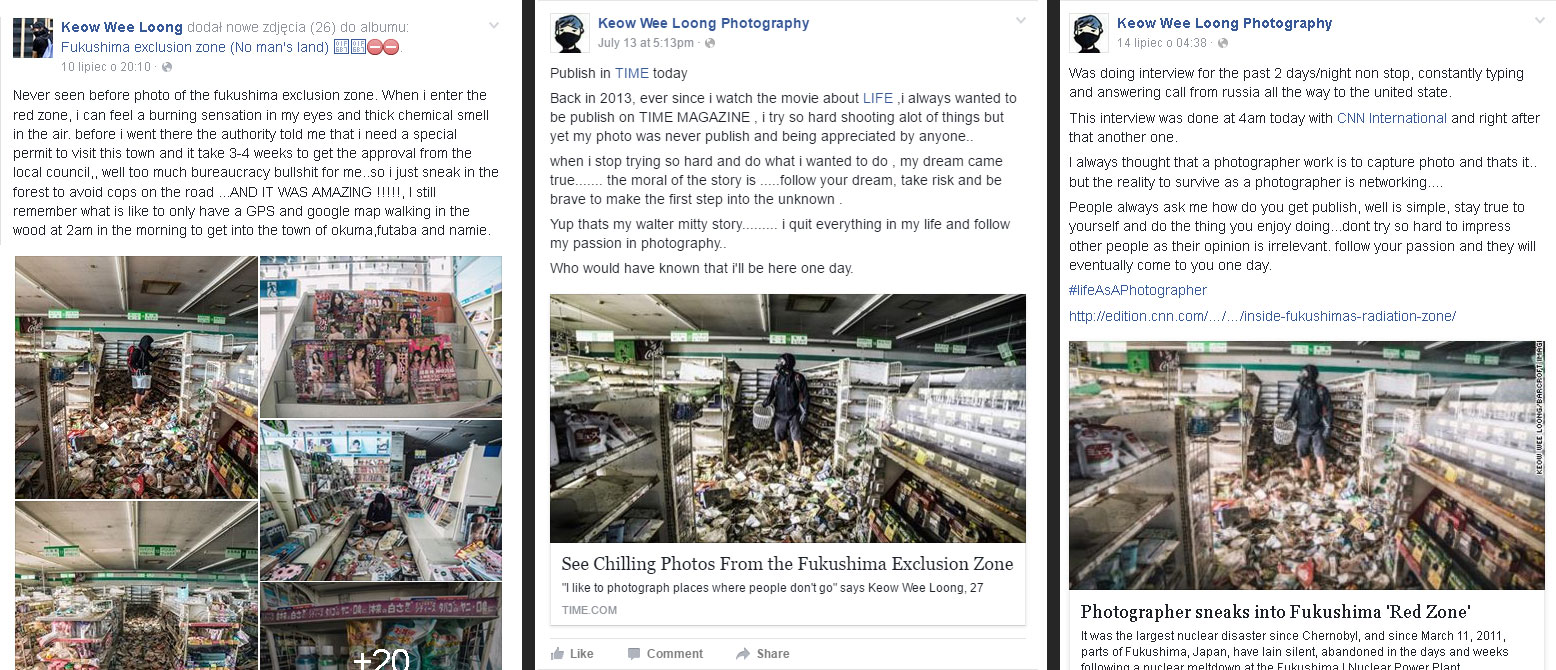
screenshot of Keow Wee Loong’s Facebook profile – www.facebook.com/uglykiwi and www.facebook.com/KeowPhotography
Keow Wee Loong’s story strongly recalls the story of Elena Filatova, a.k.a. ‘the Kidd of Speed’. This young woman claimed to have made an illegal solo motorcycle trip through the closed, radioactive zone in Chernobyl and hid her face under a motorcycle helmet. In reality, she never drove her motorcycle through the closed zone and all of her photographs were taken outside the zone or during a tourist coach trip, which she went on dressed in motorcycle gear and a helmet.
Keow Wee Loong’s story is similar. Besides having deliberately created a sensational text and portrait photographs depicting him alone in a gas mask with a shopping basket in hand, it quickly became clear that, in principle, his entire text is dishonest, his trip to the no-go zones untrue and the photographs were taken in areas that everyone can access.
I have visited Fukushima many times to document the destruction caused by the disaster at the nuclear power plant, and so I did not have any major problems identifying the sites where Keow Wee Loong took his photographs. It quickly turned out that all of the photos he took were not taken in the red no-go zones as he claimed, but only in the open green zone (sometimes orange) as well as on Road No. 6, which runs through the Fukushima prefecture. All of these places are open and accessible to all.
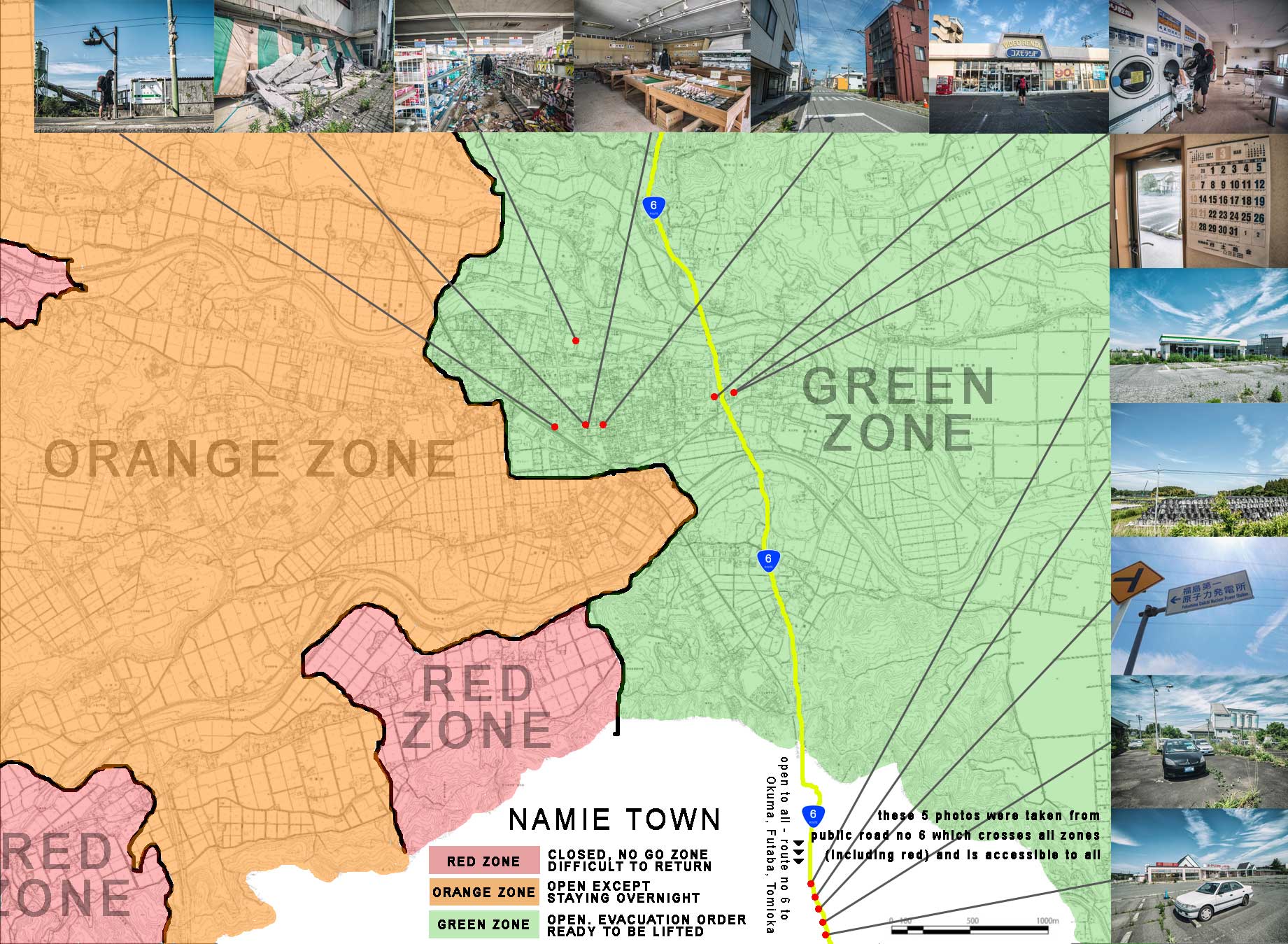
Map with the locations of places where Keow Wee Loong took his photographs. In order to prevent similar behaviour, the locations of some places are approximate.
The green zone in the town of Namie, where the photographer took most of his pictures, have had this status for at least three years and have been open to all since 1 April of this year. In Tomioka, where Keow Wee Loong also took photographs, these zones were open even earlier. Anyone who wished could enter them freely already a few years ago.
Today, the streets of Namie and Tomioka are full of cars and people, which one cannot fail to notice. In Namie, there is a working police station, a petrol station and the first shops have been open. One can also see a lot of repair crews on the streets of Namie and Tomioka, as well as increasing numbers of curious tourists. Radiation in the centre of Namie is approximately 0.1 uSv/h, and is therefore normal; it does not differ from most other cities in Japan and around the world. One doesn’t need a gas mask there, much less a full-face one. It isn’t necessary to hide from the police or hike through the woods for hours to get to Namie or Tomioka. Anyone who wants to can go there without permission.
Only access to the most contaminated zones, referred to as red or no-go zones, located closest to the power plant and contaminated from the radioactive fallout require a special permit. Contrary to the claims of Keow Wee Loong, he never managed to get to these places. Legally or not. Contrary to what he says, a permit can be obtained in just a week – you just have to demonstrate and justify an important public interest. Evidently, however, Keow Wee Long could not justify any public interest.
Why am I writing about all of this?
My interest is not to trivialise the catastrophic consequences of the failures of nuclear power plants. When I was 14 years old, I had to drink liquid iodine, which would help stop the absorption of the radioactive iodine isotope coming from the damaged reactor in Chernobyl. For these and other reasons, I have devoted the last 8 years to the subject of Chernobyl (I have been there dozens of times), as well as with the subject of Fukushima from the moment the disaster in Japan happened (I have visited 4 times in the past year, spending more than a month in total there). During this time, I have seen the effects of nuclear disasters enough to be opposed to this form of energy production.
I am, however, a strong opponent of seeking sensationalism, 15 minutes of fame and the money that comes with it, which has become synonymous for me with Keow Wee Loong. Photographers and writers of unreliable and inaccurate texts, which are then replicated by hundreds of media outlets around the world, create a false picture of the current situation in Fukushima. This is particularly important here as, in contrast to Chernobyl, the consequences of the disaster are still fresh and painful. To date, nearly 100,000 evacuees are still out of their homes. Many of them are following the progress of the disaster recovery works and often base their decision to return (or not) on media reports.
I think that the international community, Japanese society and, above all, the evacuated residents should have reliable information about the places where they once lived and where I hope they will shortly be able to return.
Arkadiusz Podniesiński
Photographer
www.podniesinski.pl
UPDATE 1 (20/07/2016)
I decided to publish locations of all photos taken by Keow Wee Loong mentioned on my map above to avoid any misunderstanding. Everyone can see and compare photos taken by Keow Wee Loong and exact location on Google Street View. (clockwise)
1. Train Station in Namie:
https://www.google.pl/maps/@37.4921372,140.9904923,3a,75y,204.36h,87.19t/data=!3m6!1e1!3m4!1su7SAc44YHrExtlWVEQ0MEA!2e0!7i13312!8i6656?hl=pl
2. Shop with collapsed awning in Namie:
https://www.google.pl/maps/@37.4922056,140.9927393,3a,75y,39.44h,88.08t/data=!3m6!1e1!3m4!1sf9HdALWp5nXP1GuaT_Zsjw!2e0!7i13312!8i6656?hl=pl
3. Supermarket in Namie:
https://www.google.pl/maps/@37.4974344,140.990753,3a,75y,214.34h,79.36t/data=!3m6!1e1!3m4!1stwJfOnCrxrMMqNbSL1YMbQ!2e0!7i13312!8i6656?hl=pl
4. Inside of the shop with collapsed awning mentioned above:
https://www.google.pl/maps/@37.4922056,140.9927393,3a,75y,39.44h,88.08t/data=!3m6!1e1!3m4!1sf9HdALWp5nXP1GuaT_Zsjw!2e0!7i13312!8i6656?hl=pl
5. Red building in Namie:
https://www.google.pl/maps/@37.4922724,140.9939059,3a,75y,268.83h,95.24t/data=!3m6!1e1!3m4!1sixf2idw8Uiz0c4-Emf5lzw!2e0!7i13312!8i6656?hl=pl
6. Video Rental in Namie:
https://www.google.pl/maps/@37.4937924,141.0013275,3a,75y,224.93h,91.04t/data=!3m6!1e1!3m4!1sn_lKunNgpCmnohPNnqnm9w!2e0!7i13312!8i6656?hl=pl
7&8 Laundry and interior in Namie:
https://www.google.pl/maps/@37.4945953,141.0043797,3a,75y,296.88h,87.21t/data=!3m6!1e1!3m4!1sTe2MKv1TZJAao6C7lGYAEQ!2e0!7i13312!8i6656?hl=pl
9. Family Markt - taken from the road no 6 accessible to all:
https://www.google.pl/maps/@37.4585033,141.0104772,3a,75y,94.12h,69.22t/data=!3m6!1e1!3m4!1sb85YLO0Bz26D04l2dIN-kA!2e0!7i13312!8i6656
10. Storage place – taken from the road no 6 accessible to all:
https://www.google.pl/maps/@37.3620206,141.0096477,3a,75y,99.28h,75.97t/data=!3m6!1e1!3m4!1s0zOsA6xa5puvZmfiMYLv-A!2e0!7i13312!8i6656?hl=pl
11. Road sign – taken from the road no 6 accessible to all:
https://www.google.pl/maps/@37.4275286,141.0068007,3a,75y,168.99h,79.41t/data=!3m6!1e1!3m4!1sMHQBf7eaTDbde0_sNEzIjw!2e0!7i13312!8i6656?hl=en
12. Car dealer – taken from the road no 6 accessible to all:
https://www.google.pl/maps/@37.4042,140.9984783,3a,75y,34.68h,89.45t/data=!3m6!1e1!3m4!1s8034oabI-LrNCxNcTuFJxg!2e0!7i13312!8i6656
13. Supermarket – taken from the road no 6 accessible to all:
https://www.google.pl/maps/@37.3394134,141.0137244,3a,75y,89.34h,79.69t/data=!3m6!1e1!3m4!1sOM3zNeWNSHj2COqyORgSOA!2e0!7i13312!8i6656?hl=pl
UPDATE 2 (22/07/2016)
English translation of very interesting article from the Huffington Post JAPAN describing the reaction of the residents of Fukushima on a false Keow’s story. (translated by Andy Coombs)
Malaysian Photographer „Photos from the Fukushima Restricted Area” -> Angers Local Foreign Residents „Stop the Rumour Spreading Cosplay”
The Huffington Post | Author: Chitose Wada
Submission Date: 19 July 2016, 12:33 pm JST
On July 10th Malaysian photographer Keow Wee Loong (27) has caused controversy by uploaded photos to Facebook that were taken in evacuated areas that are preparing to be re-opened surrounding Fukushima Daiichi Nuclear Power Plant. Loong introduced the photos as inside „Fukushima exclusion zone”. CNN and The Guardian picked up the story, and as of 10 am on the 19th the story has been shared over 70,000 times.
However, many foreign residents living in Fukushima have criticized Loong’s actions. The 4 main complaints are:
He entered into residential homes and shops without permission to take the photos.
He wrote that the photos were taken in a restricted one, but most of the photos were not taken in a restricted area.
Even though there were people in the area, he exaggerated the photos to appear as if the area was deserted.
He wore a gas mask, along with shorts and sandals when he took the photos which was irregular.
Why did Loong take these photos? Why were Fukushima’s foreign residents upset? We asked both sides of the story.
What type of photos did Loong take?
First we clarified what type of photos Loong took.
During June Loong and some Japanese colleagues took some photos in Namie, Okuma, and Futaba in Fukushima. Loong took some photos of goods scattered around a supermarket and a video rental store, washing scattered inside a laundromat, in homes where it looked like people had lived, and uploaded 27 images on July 10th. But there was no-one else present in all the photos, just Loong in his gas mask, sandals, and shorts, and 2 colleagues in white masks and long pants.
Loong posted on Facebook, „… I need a special permit to visit this town and it takes 3-4 weeks to get the approval from the local council,, well too much bureaucracy bullshit for me .. so I just sneak in the forest to avoid cops on the road …” to emphasis the difficulty of getting the photos. He wrote that he went and took photos without permission.
Further more, Loong referred to the 'difficult-to-return’ designated areas as the „Red Zone”. The photos were explained with captions like, „When i enter the red zone, i can feel a burning sensation in my eyes and thick chemical smell in the air”, „the Empty ghost town”, „eerie feeling in this ghost town, even there is no car in this town but the traffic light is still working”, „(Eating candy at the supermarket with nobody around, it was my dream as a child)”.
Why was Loong in shorts?
Loong told Huffington Post Japan that the purpose of these photos was the capture the impact of Fukuhsima Daiichi.
He said that „I didn’t mean to break-in” (to the homes and shops). „The doors were already open. „If they were closed, I wouldn’t go in,” he said.
When asked about taking photos in places where we wouldn’t see other people or cars he answered, „I saw them along Route 6”, then explained, „But I avoided those places.” He didn’t say any more about that.
When we asked about the gas mask, shorts, and sandals he explained, „I had no money to buy any protective clothing.” This gas mask was the mask he used when he snowboarded down a volcano in Indonesia.
„I came to Tokyo, and I lost 300 000 yen. I had no money, I couldn’t buy any protective clothing, and my time in the country was limited. I couldn’t wait for permission.
Also, I don’t usually wear long pants. I only brought some shorts and a jacket to Tokyo. I had no money, I couldn’t buy new pants. It is a military gas mask; I always carry it around with gloves.
I asked Greenpeace Japan to help me with photography permissions, and protective clothing, but they wouldn’t help. They wouldn’t co-operate at all. So, as a freelance photographer, I did all that I could myself.”
The reason he gave for the gas mask was, „When I entered the red zone, my eyes were stinging. I thought I shouldn’t be breathing the air directly into my lungs,” he answered. He didn’t answer about his colleague’s attire.
On an interview on the travel information site Zafigo, Loong said, „I’m sorry if I have hurt the people of Fukushima” he apologized, „If I can’t sell photos, then I can’t make a living as a photographer. I didn’t interfere with anything. I only did my job as a photographer. Just take photos, record the journey, then share it with the world,” he explained. „I only did something that a lot of other people can’t do. If a lot of people could come to Japan and visit Fukushima, there is no need for me to do it,” Loong urged.
„I take photos of what people around the world want to see.” Loong told Huffington Post Japan. „Do these photos represent Fukushima? Or do they misrepresent Fukushima? I don’t think they do.”
Criticism from foreign residents in Fukushima
When Loong’s photos began to spread online, complaints from foreign residents in Fukushima began. New Zealand-born Iwaki-based English teacher Xan Wetherall (30) posted in a Facebook group for English teachers in Fukushima, „There are some photos taken inside shops and houses without permission. Not only are his actions unlawful, it’s very rude tot he people that have been forced to evacuate their homes.” Many foreign residents in Fukushima have similar feelings, „Why is he only taking from the one perspective?” „I want to here from the residents”, and there are over 70 similar comments as of 10 am on the 19th. Some people also made comments directly to Loong in English, „Don’t take photos as a publicity stunt.”
Wetheral in a phone interview with Huffington Post said, „There are a lot of people in Iwaki that have evacuated due to the accident at Fukushima Daiichi power plant. Maybe they know the people’s home that Loong used in his photos. It’s upsetting that he uploaded these photos without their permission,” she said. „There is a story in Fukushima, people are striving to rebuild. Entering into people’s homes without their permission, without knowing the full story, just posting exaggerated photos, it’s unfair.”
Wetheral is worried that Loong’s actions might have a negative impact on foreign residents in Fukushima. „When you live in Japan, for example, even if a door is unlocked, you can’t go into other people’s rooms. Maybe Japanese people think other foreign residents will do the same thing as Loong. Due to one person’s foolish actions, I’ll regret it people think like that.”
Loong’s photos „deliberately exaggerate the absence of people”
William McMichael from Fukushima University Finance and Economics Department told his concerns to Huffington Post Japan, „Intentionally spreading just a few photos, it can create a mistaken image of Fukushima.” It gives the impression that Fukuhsima has become ruins.
„’Red Zone’, 'Ghost Town’, 'Restricted Area’, 'Abandoned for 5 years’, these are the type of sensationalist words that Loong used. It just makes it seem that Fukushima is a place where nobody lives, but in reality even the places where he took photos, reconstruction work is beginning, people are working.
The phrase 'Red Zone’ is associated with „complete lock down”, and „state of emergency”, but Longs photos were taken in the areas being prepared for re-habitation, not areas with restrictions on entry. Many things included in the photos are the areas where it’s difficult to return if you look at the map, anyone can use these roads. I can’t call those areas the „Red Zone”, although Loong clearly doesn’t know the difference. A sly use of words, and taking photos that only show himself or colleagues, they were able to purposefully create this image that it was a ghost town.
Over half of Loong’s 27 photos were taken in Namie. I know the place where he took the photos near Namie Station, and I went to take my own photos. These are areas that are being prepared for re-habitation, you don’t need special permission for these areas, anyone can go there.
For example, here is the place where Loong took the photo of the crumbling wall at the shop front. If you step back a bit you can see the orange cone that is being used during construction.
Long said, „No one has been here for 5 years, it’s left as it was” but that’s not the current condition, you can see people are working. Just by that you can see the difference.
Also, Loong took some photos down the side of the station, but there is demolition work going on out the front, there are people working nearby. Just because there is no one around doesn’t make it the red zone.
The government highlights the intersection out from of Fukushima Daiichi in pink the „Evacuation Limit Diagram”, anyone can check it out along Route 6, many cars come and go past here. Loong also wrote he was „100 metres from the nuclear power plant”, but where he was about 2km away, so he got that wrong.”
Loong „stirring up fears in cosplay”
Also, both Wetherall and McMichael point out Loong’s attire in the photos. Wetherall said, „Radiation is not a gas, so he doesn’t need the mask, he doesn’t understand radiation”, and McMichael said, „You don’t need a gas mask,” and continued,
„For example, outside Namie Station the radiation levels on the 15th were under 0.5 microseiverts. You don’t need a gas mask at that level. If he was scare of radiation, why shorts and sandals? Isn’t that his usual trademark? Being blunt, it’s just cosplay. He is not thinking about the people in the area, just spread fear with the gas mask. I want him to stop spreading hurtful rumors.
McMichael says he doesn’t want to see Loong punished
He said, „This time especially, using English to spread around the world. If it was in Japanese, there would be a lot of people who would criticize him, but in a foreign language the response is slow, it’s a problem.”
On one hand, Loong is „not trying to hide information from the people that live there, he just should have heard the stories of the people who live there.” „I’m really thankful if people want to talk about Fukushima to the world. However, I can’t allow people to deliberately exaggerate the truth and make up stories. The people of Fukushima are continuing to suffer because of the spreading of misinformation. Having said that, I don’t want Loong to be punished. I want him to come back to Fukushima, and I’ll show him around, and he take photos of the real Fukushima.
Japanese source: http://www.huffingtonpost.jp/2016/07/18/malaysia-photo-fukushima_n_11049638.html
OTHER ARTICLES AND INFORMATION WORTH READING ABOUT KEOW WEE LOONG:
1. An Open Letter to Keow Wee Long
An Open Letter to the “Fukushima Exclusion Zone” Photographer, Keow Wee Loong
2. NIKON CENTRE MALAYSIA – it would no longer feature Keow’s images at its centre.
„It was previously reported that Nikon Malaysia had replied to Keow’s post asking if it could exhibit his photos at the Nikon Centre.
„As a company we understand and acknowledge that this remains a sensitive issue to some, especially those affected by the Fukushima disaster. We respect and believe that in their best interest it would be wise not to pursue the photo exhibition.”The company added that Keow has been notified of their decision.
Source http://news.asiaone.com/news/asia/photographer-slams-malaysian-photographers-fukushima-pictures-exclusion-zone-fakeAsiaOne:





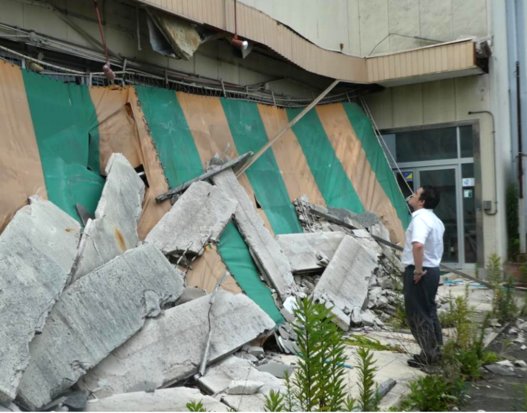

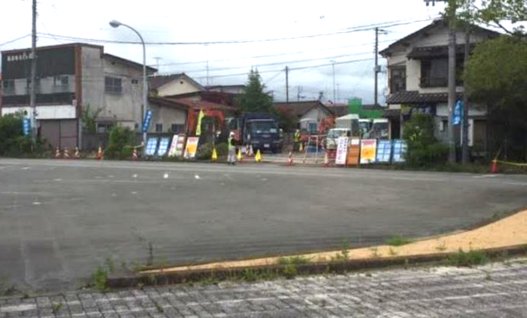
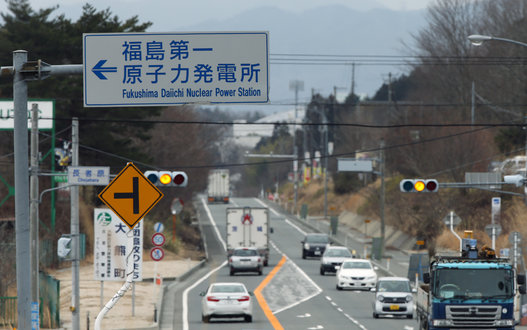
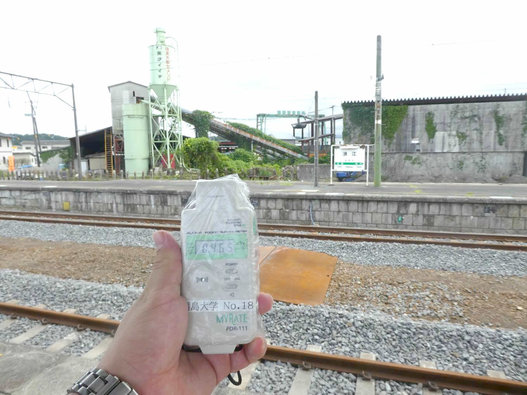
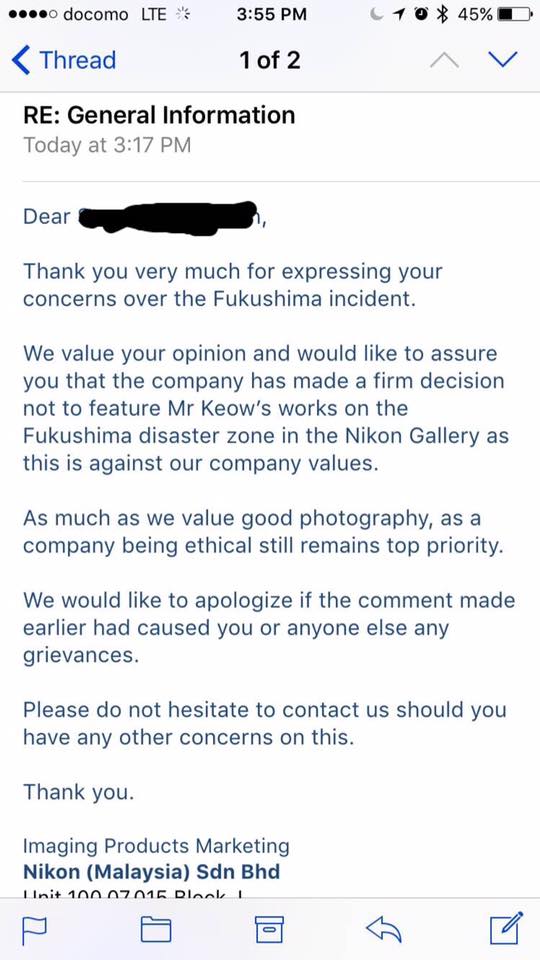
Thank you for sharing and exposing someone’s falsehood. However, can you kindly
write and advise whether it is DANGEROUS to visit areas which are affected by the
nuclear radiation? I saw a TV documentary of Ukraine and there are areas which are
still forbidden for people to enter. Japan Government does not tell the truth and foreigners
are taking holidays which MAY (??) expose them to danger. Please advise.
It might be helpful if you could show pictures of the places Keow alleged are in the hot zone from different angles showing the reality. If not many might simply choose to trust his pictures over words. There is still a general distrust of the Fukushima situation and how the Japanese government handled the news. This in turn affects many in Fukushima as they are tainted by association with the reactor and are unable to export their produce etc. The new photo series by Keow does not help clear things up and instead adds more misinformation.
The story of the guy’s fabrication is gaining traction; frontpage of the Huffington Post Japan’s website today: http://www.huffingtonpost.jp/2016/07/18/malaysia-photo-fukushima_n_11049638.html
Thank you so much for your hard work and amazing report!
For people asking for different perspectives, myself and some other foreigners who live in Fukushima have been working to show how Loong is spouting falsehoods. Two of our group helped with an article for Huffington Post Japan that included photos of some of the same areas that Loong took photos at. Here is the link if you’d like to take a look. The article is in Japanese and the English translation isn’t that good, but the gist is that we’d appreciate if Loong would use his platform as a force for good and bolstering the community here, rather than perpetuating the string of false information that already exists in the world about Fukushima. http://www.huffingtonpost.jp/2016/07/18/malaysia-photo-fukushima_n_11049638.html?utm_hp_ref=japan
Why not you report his facebook as scam? since he scam people with his photos?
dziękuję za mówienie . Jestem z Malezji i będę szerzyć swoją wiadomość.
This is a great article. In fact, I have been waiting for some articles that clarify what he actually did, because because his story just doesn’t make sense to me. Besides, the whole thing was so disrespectful. Believing that being a critical reader is important, I tried to check the area you pointed near Road No. 6 on Google Maps, and I found the Cosmoland he went to (people, try to look for コスモランド浪江 on Google Maps – street view). Also, the writer’s zoning map matches with the map from the city (http://www.town.namie.fukushima.jp/soshiki/2/namie-factsheet.html), so it is really at the green zone. Didn’t have time to check more in detail though, especially because the map is not so clear. I agree that it would be helpful if you could show some pictures of the places he went for the world to see. Or maybe some screen shots from Google Maps? Thank you for sharing this.
@Mun- you can do a comparison on the map above with Google Street view.
Thank you so much for your good article about such a crappy job done by a photographer without ethic. I went there myself so many times for the last 5 years (maybe 5 or 6 months total). I totally agree with you except maybe for the authorization to enter the red zone that are more and more difficult to get. I don’t know about you but I used to get a pass for a week each time I ask for the last 3 years (for Futaba, Okuma or Yonomori). But now, it is 2 or 3 hours max, you have to enter by a specific gate and stick to one area and get the permission from government + city office and sometimes with a person from the city office with you that check what you do. The government is really trying to push people to go back even if this policy is not working (Nahara / Odaka for exemple with 5 to 10% of return only) and they don’t want us to depict what the no go zone looks like today. And actually, this zone is not really shown in the Japanese media and the residents from the area are complaining about that.
a question:
the „white” region in your map, where five images were taken along Road 6, it is what „Zone”?
Some of these pictures are actually taken at the regeion which is not the „red zone”. Some of the pictures are even taken infront of the train station where the residents in there uses normally now. The costume he wears is also weird. Why he is wearing the mask but not a long pants? The radiation is a wave, if he really shoot at the red zone, he’s costume is not protecting his body at all. Suppose to wear a full protected clothes. I heard in an interview, he explained that he doesn’t have enough money to buy a long pants.
And lastly, why people are not noticed that he took the picture in someone’s house or store without getting their rights. People leave from their precious home and he just go in without any respect. This is a crime if he really doesn’t get any permission as he says. The lack of moral really makes me angry and sad.
Sorry for the long comment with a mess of grammar, but this is what people in Japan including foreigners thought which saw his Facebook post.
Thanks, for sharing and address the what is correct but i still curse his balls burst from radioactive ~ sorry for my rudeness. ..
I am amazed at the way you have written about the Malaysian kid, Keow Wee Leong. Someone of your experience and standard should not stoop so low to resort to outbursts. One that is clearly emotionally fueled.
Keow Wee Leong has responded to say that what you have written is merely a snippet of his travels, do you have any thoughts or rebuttals to this?
@Ethan A.
Reading his rebuttals on his own facebook page, written in barely-readable English, I think he sounds more condescending than regretting his actions for hurting Japanese people especially residents of Fukushima. He also didn’t apologize for the falsified story he had spread all over the media this past week. His actions lack of respect and ended up misleading thousands of people internationally, claiming that he entered the „Red Zone” without proper gear or even Geiger counter. Obviously no-enter „Red Zone” means that it contains harmful radiation, so excuses like „I lost all my money so I just get into the lethal zone in my shorts” is not working. I am not even sure if he went to decontamination procedures if he really did went to the „Red Zone” since he’s getting there without permission.
Not only that, he cited Huffingtonpost Japan and saying that it’s the top news today, not even knowing that the article is criticizing his ill-mannered action with net users telling him to „stop cosplaying” because the gas mask only induced fear to Fukushima residents who hopes to return to their homeland quickly.
What’s the white zone on your map?
http://petapixel.com/2016/07/19/fukushima-photographer-defends-photos-accusations-fakery/
In addition, authorities lifted an evacuation order for nearly all parts of Minamisoma city, Fukushima prefecture, allowing more than 10,000 people to return to their homes for the first time since 2011’s nuclear disaster.
http://www.aljazeera.com/blogs/asia/2016/07/japan-returning-home-fukushima-nuclear-disaster-160717182129794.html
This is the kind of news we are hoping. Not some sensationalized photos that only show devastation, like the unnecessary gas mask because of „burning sensation in my eyes and a thick chemical smell in the air” . What Mr. Loong did was not art nor documentary. It’s simply public stunt for momentary fame.
Chinese will always be chinese.scamming people, oppressing aboriginals when the chinese are immigrants themselves, put worldly greed before moral and humanity, killing sharks for fins when they don’t reared themselves. what a waste of space and oxygen on this earth
So you’re trying to get your 15 min of fame off his 15 min of fame?
@End user:
„So you’re trying to get your 15 min of fame off his 15 min of fame?”
You are aware that Mr. Podniesinski had his (strikingly similar) images of a deserted Fukushima published already in late 2015? Have a look at the „Fukushima” gallery on this very site.
In fact, Mr. Podniesinski not calling out Keow Wee Loong as what he is — a blatant copycat of his images, just with his narcissistic self inserted front and center — shows a level of restraint and modesty I frankly couldn’t muster myself.
It is amusing to see how Keow tries to shift the blame to Arkadiusz lol
Thank you for exposing his factual inaccuracies and put down his insensitivity towards the issue. The Japanese people have been through enough without unethical fame-seeking photographers exploiting their grief.
Looking on the bright side of this whole farce: A lot more people, while reading your letter and looking at those manipulated pictures, have probably gone on to find out more about the actual situation in Fukushima now.
Thank you for sharing this information. Keow also claimed that he climbed mount Bromo in East Java, Indonesia on the eruption day earlier this year. When i confronted him about this fact on his facebook, he simply deleted my comments and blocked me from his account. Apparently lying and bragging is the only things he knows how to do, as his pictures is worthless in photographic sense.
Thank you for debunking all his claims and sharing this information.
@Ethan A.
Mr. Podniesinski’s article was hardly an 'outburst’ that was ’emotionally fueled’. We’re you inhaling something when you were reading it?
@Ultra-nationalist
I hope no roast duck pancakes or egg fried rice has ever tainted your pure nationalist lips
1km becomes 100m
http://i.imgur.com/AeLdcyF.jpg
Here he is giving an interview on TV wearing his usual shorts+sandals+mask. The same „costume” he wore snowboarding the volcano. Did he really lost all his money in Japan? Your guess is as good as mine.
https://www.facebook.com/photo.php?fbid=923312764415005&set=a.177766252302997.47285.100002088711813&type=3&theater
Here he is demonstrating how he takes photo of how he takes photo of himself. Lies after lies, so much it is getting cringey.
https://www.facebook.com/photo.php?fbid=1112955945450685&set=a.208101212602834.53672.100002088711813&type=3&theater
This MAN (stop calling him kid, he is 29) is an activist/rebel type thrill seeker and urban explorer, and he should have stuck to that role.. I guess „photojournalist” and „historical documentarian” sounds much cooler.
My god those „I’m just walking here unaware of the camera” poses is just a slap in the face… and tone down those HDRs for goodness sake.
I believe that you should not imply the article from an anonymously-new blog as „worth-reading”.
@distantshores
The blog was written by someone who after seeing the photo set felt strongly enough to make their own blog to stop the misinformation. It IS worth a read.
The butthurt is real.
Like previous guy said, trying to get 15min of fame out of his 15min of fame.
What are your thoughts on thorium/molten salt reactors? The way they’re designed they don’t melt down like traditional nuclear reactors and actually re-use the waste the generate energy effectively producing zero radioactive waste.
@typical
it’s not important if Keow was in no-go zone or not but the dishonest, sensatious, and generally wrong way he did it and false information he provided. He calls Namie town a no-go zone which is not. It created a false view of the current situation of Fukushima.
@Typical
If you bothered to take a glance at Arkadiusz’s Bio and work I think you’d have good reason to think otherwise.
I think the whole 15 mins of fame kinda deal isn’t what someone established in the profession enough like Arkadiusz would bother with.
As always, cui bono?
As for Keow, the question of ethics aside, considering
i) How unprepared he was (not just equipment/permits, but did not even bother to do any prior research to be anywhere near being not misleading), and
ii) His previous work (daredevil themed and sensationalist, taking pride at law breaking stunts),
my conjecture to explain his behavior is:
a) Either Keow was not attempting photojournalism but rather another daredevil themed escapade, or
b) He was attempting photojournalism but is inept, either by sheer inexperience or incompetency, thus the dare devil sensationalism tinge to it all.
I’d further raise the conjecture that Keow did not anticipate the sheer attention he got and just ran with it when it came, but alas it drew enough attention to warrant the valid and pertinent negative feedback. Unfortunately for Keow his handling of the fallout isn’t helping his case at all.
Just to note, this sort of negative feedback is not unique to Keow. There have been many criticisms of sensationalist or misleading portrayals of Fukushima since the earliest days of the disaster.
Also, if you can parse Japanese, here’s a link (with enough vitriol for spice) for a taste of the distaste for what Keow did: http://shinobuyamaneko.blog81.fc2.com/blog-entry-211.html
@zosh @germanicus
U guys sound very defensive towards Arkadiusz but I have a question that I am seriously curious about, so please don’t get triggered.
Guys, what zone is the white area in the map in this blog? Keow specifically mentioned this point in his defense but I cannot find any rebuttal against this particular point. Out of the 100s of comments I have read no one seems to have addressed it.
Seriously what zone is it and why is it white!
@Jessica. It’s the map of Namie town only, where Keow took almost all his photos published on FB. It’s not the map of the entire zone, as Keow wanted to convince the readers. Look again – I clearly stated 'NAMIE TOWN’.
Other Keow’s photos published on his FB were taken on the road no 6 which is accessible to all, even if the road crosses red, no-go zones. I marked them on my map too. It doesn’t matter that the road crosses red, no-go zones, if it’s open to all.
My map is also consistent with the map from the Huffington Post Japan. All pins on their map are in Namie or on the the same road – accessible to all. Actually, Keow doesn’t understand Japanese and wasn’t aware that the map he attached on FB (and the whole article) to prove his point confirms my allegations.
Finally, even if Keow went somewhere into no-go zone, still his story, as a whole, is fabricated. Please read the article from Huffington Post (above) to see more.
On 22nd July Keow appologized on TIME magazine.
http://time.com/4403093/fukushima-exclusion-zone-japan-photos/ ( see [Update 7/22/16: )
„I deeply apologize to the residents of Fukushima if they felt I disrespected their home. ”
This site did a great thing.
Daily Mail picked this story: http://www.dailymail.co.uk/news/article-3897212/Fukushima-five-years-Inside-exclusion-zone-Japanese-nuclear-plant-deemed-uninhabitable.html
Used this page to prove factual inaccuracy.
As Finland was impacted by Chernobyl, I’m absolutely disgusted of this whole issue.
There seems to be certain apathy to do „proper research” and go that extra mile to verify things.
@Germanicus
Thanks for http://shinobuyamaneko.blog81.fc2.com/blog-entry-211.html